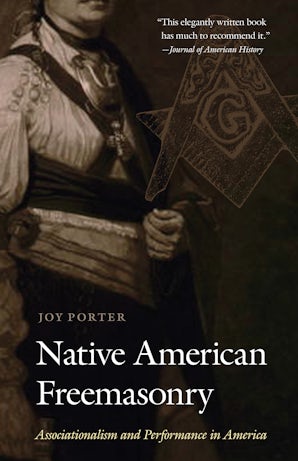
366 pages
7 photographs, 7 illustrations, index
November 2019
978-1-4962-1905-3
$30.00 Add to CartNovember 2011
978-0-8032-3797-1
$30.00 Add to Cart"Joy Porter's book on freemasonry among American Indians deepens our understanding of how an institution once seen solely as elitist and secret could be used to give meaning to native American spiritual beliefs and social activism. It joins a growing scholarly literature that is changing the way we view freemasonry as well as our understanding of Indian Americans. A triumph of scholarship!"—Margaret C. Jacob, distinguished professor of history, UCLA
List of Illustrations
Acknowledgments
Introduction
A Note on Terms
1. Approaching Native American Freemasonry, Part One
2. Approaching Native American Freemasonry, Part Two
3. A History of Freemasonry: From Europe to the United States
4. Freemasonry as Ornamentalism: Class, Race, and Social Hierarchy
5. The Attractions of Freemasonry to Indians and Others, Part One
6. The Attractions of Freemasonry to Indians and Others, Part Two
7. Native American Freemasons: The Revolutionary Era
8. Native American Freemasons: The "Settlement" of the West and the Civil War Era
9. Native American Freemasons: The Nineteenth and Twentieth Centuries
10. On Television's Deathblow to Fraternalism: Understanding Associationalism and the Declining Role of Fraternalism in American Life
Notes
Bibliography
Index